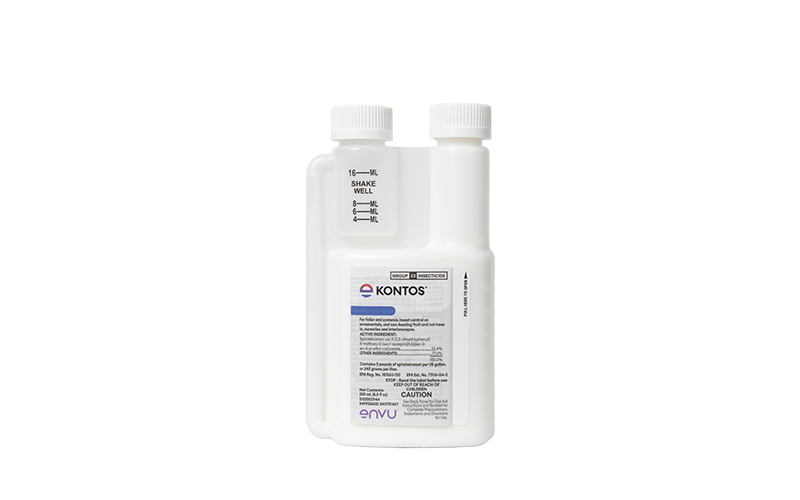The Problem
Whiteflies are tiny, sap-sucking insects that can be major pests of ornamental plants. They are most common during periods of warm to hot weather and can build up to extremely high populations on susceptible plants in greenhouses and nurseries. When actively feeding, whiteflies cause leaves to turn yellow and eventually brown as the leaf tissue dies. Large colonies typically develop on the undersides of leaves where they normally lay tiny oblong eggs that range from yellow to white in color. After the eggs hatch, the young whiteflies go through four nymphal stages called instars. Winged adults emerge from the last nymphal stage. All stages feed by sucking plant juices from leaves and excrete excess liquid as drops of honeydew when they feed. White flies are extremely difficult to control when populations are high, so preventative management is crucial.
What To Look For
There are numerous species of whitefly associated with ornamental plants. The most common species include the greenhouse whitefly (Trialeurodes vaporariorum) and the sweet potato whitefly (Bemisia tabaci), and both have a wide range of plant hosts that include many ornamental crops and weeds. Ornamental production areas in warmer climates such as Florida and California provide opportunity for these pests to breed year around, moving from one host to another as plants go through the production cycle. In addition to the destructive feeding damage whiteflies cause on plants, the honeydew excreted on the affected leaves provides a source of nutrition for sooty mold fungi. Sooty mold fungi are not plant pathogens, but readily colonize plant tissues as they feed on the honeydew excreted by the whiteflies. The fungus causes any affected surfaces (plants, concrete, etc.) to blacken from an abundance of spores and subsequently reduces overall plant quality. The best way to eliminate sooty mold is to control the whiteflies that are feeding on the plant.
The Solution
Effective whitefly management in greenhouse and nursery production requires a preventative approach. Identify and closely monitor plants known to host high populations of whiteflies, because infestations will likely start on the most susceptible plants. Many weeds are susceptible hosts for whiteflies and should be removed or controlled with herbicides. Yellow sticky traps can be used to aid in monitoring whiteflies and, under high populations even help to reduce their numbers. The use of biological controls (live predators) can be very effective, but may limit the use of chemical insecticides and should be practiced with this consideration.
Altus®
Altus is a systemic insecticide that controls whiteflies including both B and Q biotypes with flexible spray or drench applications made anytime throughout the crop cycle. A member of the butenolide class of chemistry, Altus is upwardly systemic and absorbed by the roots and its translaminar activity allows it to move readily through the leaf tissue. Altus provides extended residual control of whiteflies (21 + days). There is no known cross-resistance to Altus with other insecticide modes of action , making it an excellent fit for a resistance management program. Altus is labeled for use before, during and after bloom. Altus is an excellent insecticide option for use in integrated pest management (IPM) programs. Altus is a soluble liquid (SL) labeled for use on ornamental plants in greenhouses and nurseries, including non-bearing fruit and nut trees, interiorscapes and landscapes.
Savate®
Savate is highly effective against whiteflies. A member of the tetronic acid class of chemistry, Savate affects all development stages of whiteflies (including eggs and transformation stages) and controls both B and Q biotypes. Savate is translaminar and moves readily through the leaf tissue providing extended residual control of whiteflies (30+ days). Savate is a suspension concentrate (SC) and is labeled for use on ornamentals grown in the greenhouse or nursery. For best results, apply before damaging population of whiteflies are established. See the label for plant restrictions.
Kontos®
Kontos is a systemic insecticide from the tetronic acid class of chemistry. Kontos can be applied as a foliar spray or drench and controls whiteflies including both B and Q biotypes. Kontos is both xylem- and phloem-active, meaning that because of the systemic activity the product moves upward and downward in treated plants. There is no known cross resistance of Kontos with other insecticide modes of action, making it an excellent part of a resistance management program. Kontos is a suspension concentrate (SC) formulation for use on ornamental plants in greenhouses and nurseries, including non-bearing fruit and nut trees. See the label for plant restrictions.





